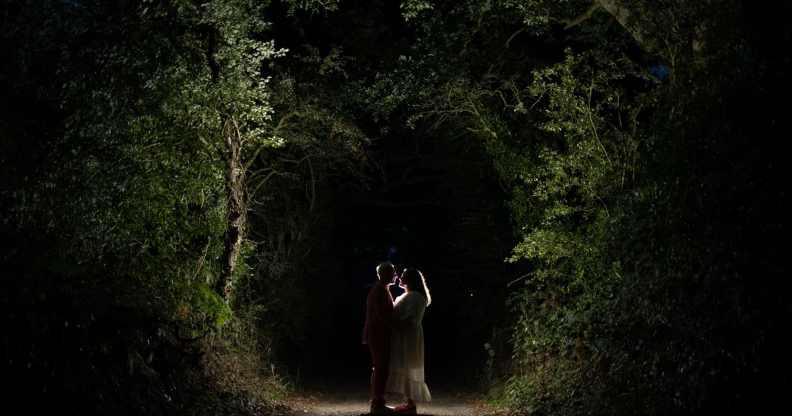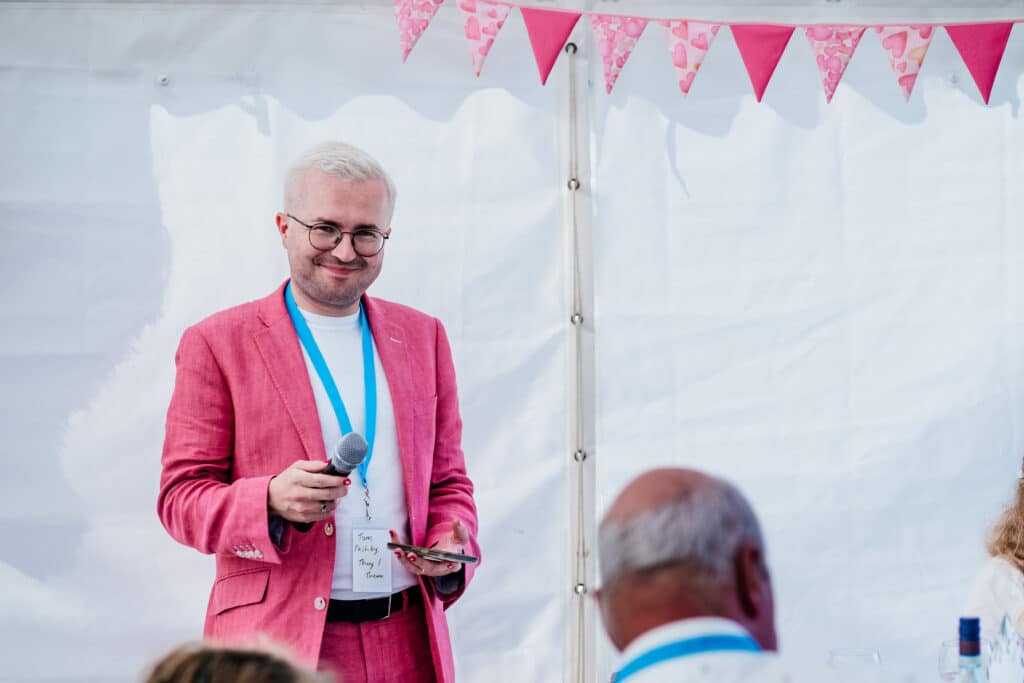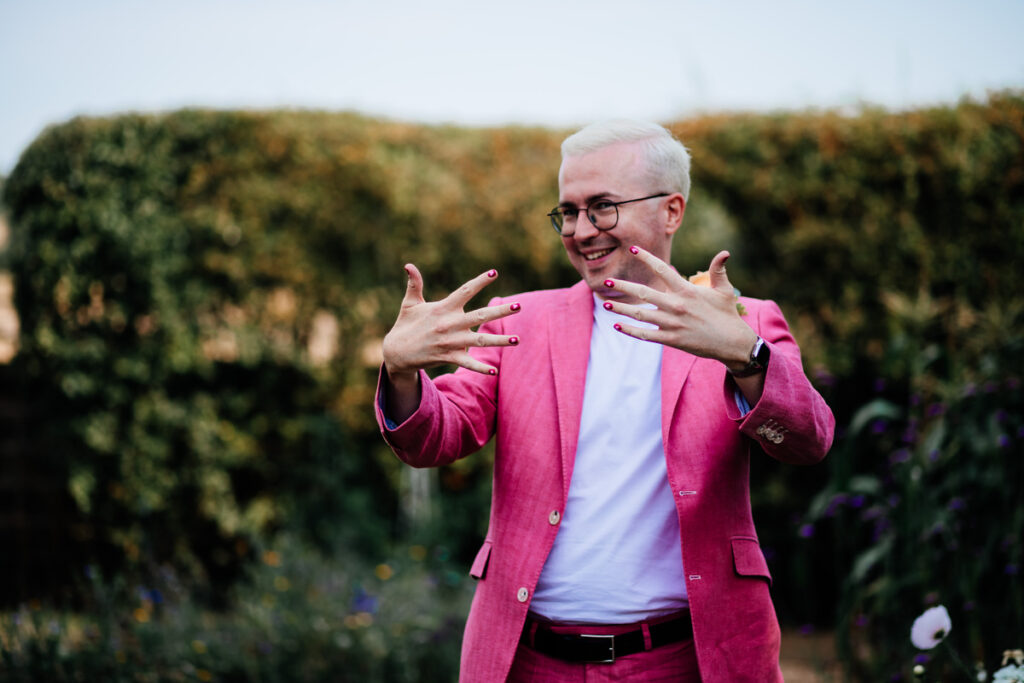Tying the knot as a non-binary person isn’t straight-forward – but it can be beautiful and queer

Tom and their partner Amy on their civil ceremony day. (Gem Wright Photography)
Writer Tom Pashby reflects on their recent civil ceremony, and the hurdles faced by non-binary people when considering marriage or civil partnerships.
Weddings are arguably one of the most binary-gendered aspects of life, a hangover from a much more patriarchal past.
Today, there is a rich culture of queer weddings, especially since the legalisation of same-sex marriage in countries like Britain (in 2014) and the US (2015).
But marriages and civil unions still have many binary aspects to them, which presents a host of challenges to non-binary people like me.
Why I chose a civil partnership
I’m non-binary and agender, and I entered into a civil partnership at the beginning of September.
My partner, a cis woman, proposed to me in December last year and I said yes. We had discussed it for years but hadn’t got over the line to being actually engaged.
I was thrilled when she got down on one knee early in the morning and my screaming probably woke up other guests in the hotel that we were staying in.

Tom on their big day. (Gem Wright Photography)
We always knew we wanted a civil partnership rather than a marriage. I knew I wanted one before I realised I was non-binary because of how patriarchal the institution of marriage is.
Some might ask why I decided to have a wedding at all, given the binary-gendered aspects of any two-person legal union.
My response is that it’s not all about me, and my gender identity doesn’t dictate the whole experience of my life. It’s also about my partner, and my desire to have a big party and a formal partnership which recognises our commitment to each other.
My ‘agender quadruped’
When it came to working out a pre-wedding party – traditionally called a stag or hen party – I knew my version would be different. Partly because I’m not a man or a woman, and partly because most of my friends are women and most of them are queer.
A friend who is genderfluid suggested I call my party an ‘agender quadruped’ – a genderless four-legged creature, as an alternative to a stag.
We went to Amsterdam and did *most* of the things you’d expect from a party in the stag capital of Western Europe, although our only visit to the Red Light District was when we accidentally went through it while nursing hangovers on a Sunday morning stroll.
The civil partnership ceremony
When it came to planning our ceremony, my fiancée and I read through the options. The words we used for our civil partnership are much more equitable than the words used for marriage ceremonies.
It makes clear that we are equal partners in a union. But there are lots of aspects of the ceremony and reception that are traditionally expected and are gendered.
For example, how would we walk down the aisle and with who (we walked each other down). Who gives speeches? And who, if anyone, has the first dance? One of our suppliers asked if there would be a ‘father-daughter dance’.
The registrar, who was excellent, initially referred to me with he/him pronouns when my partner and I ran through the ceremony in the 20 minutes before it took place. I corrected her and she was extremely polite and confirmed she would use they/them pronouns.

Tom Pashby is all smiles on their civil ceremony day. (Gem Wright Photography)
If non-binary identities were recognised in law, and there was better education about gender-neutral pronouns, hopefully that type of conversation wouldn’t need to happen in the future.
Right now, the UK doesn’t recognise non-binary as a gender identity in law, despite efforts from campaigners. Notwithstanding the lack of recognition, civil partnerships don’t force you into choosing binary-gendered options. For example, I didn’t need to choose a title when I filled out my forms, but I did request Mx because I like it.
One of the aspects of the wedding which surprised me was the role of suppliers in making the day a success, particularly the photographer.
There are many practical responsibilities that the photographer sometimes takes on, such as making sure everyone’s lined up to throw confetti. Sometimes, rituals like this might enforce gender roles – or they might help you to queer the celebration in a way that is more suitable for you as an LGBTQ+ person. Our photographer was great at treating us equally and not trying to put me into a masculine box.
I hope that as more non-binary people have weddings, society will fall into new traditions which celebrate people of all gender identities who choose to enter into unions.

